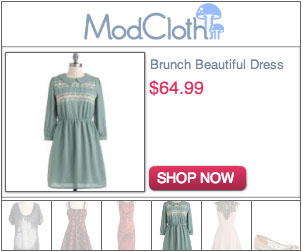Google AdWords releases new features all the time, and if you’re not constantly following them (and it takes work!), you likely won’t get the most value from your PPC accounts. Despite the communication and resources from AdWords on many of these new features, they still get lost on PPC account managers everywhere.
Recently, we ran across a post on Search Engine Watch that is a prime example of this problem. The article shows that there’s still confusion around the types of remarketing available in AdWords. We can see how this mistake could be made if you’re not intimately familiar with the options.
So today, we’re going to walk you through the three types of AdWords remarketing options so you can make informed decisions about which are the best for you, including:
- Remarketing
- Dynamic Remarketing
- RLSA (Remarketing Lists for Search Ads)
But first, here’s a brief overview on the concept of remarketing from Google AdWords:
1. Remarketing
AdWords remarketing was released in 2010 and allows you, the advertiser, to show relevant offers to previous visitors of your site on other sites as they browse the Web.
This standard remarketing service is open to all types of businesses, whether they’re advertising products, services or something else. With remarketing, you can use both text and display ads (graphics) and Google recommends using both in order to increase the range of placements on its display network.
With remarketing, you create the graphics you want displayed in your advertising campaign. Here is a refresher on Google’s policy for using images in AdWords. And here’s an example of what a display ad can look like:
If you’re ready, you can learn more about setting up your remarketing campaign, here.
2. Dynamic Remarketing
Three years after Google announced the remarketing option for all advertisers, it announced dynamic remarketing. This type of AdWords remarketing is specifically for ecommerce businesses (although Google said it’s testing it for other industries like education and travel), and works with products in the Google Merchant Center (shopping feed).
These ads are created when Google Adwords dynamically matches the products in the ad to user preferences.
Google breaks it down:
For example: Customers who browsed the dresses category on an advertiser’s website might see an ad that includes an array of the exact products they’ve already viewed, in addition to related products from the company’s catalog.
Here’s what that ad could look like:
Dynamic remarketing creates text and graphic ads on your behalf. For graphic ads, all you need to do is upload a logo, and AdWords does the rest. Here’s a brief intro on that:
Alternatively, you can tap into “dynamic creative” templates that offer more customization. You choose the template and customize it with elements like your brand colors. Here’s more on dynamic creative templates.
Other features of dynamic remarketing include:
- A feature that auto-optimizes the layout of the ad based on what the algorithm predicts will perform best for each user segment and device.
- A product recommendation feature that pulls together the optimum mix of products for each ad, factoring in elements such as related products, most popular products and items previously viewed.
- A real-time bidding algorithm that determines “the best” bid for each impression. (Side note: We haven’t used this feature and so can’t recommend it at this time.)
3. RLSA (Remarketing List for Search Ads)
This summer, Google Adwords rolled out RLSA to all advertisers as a complement to its remarketing services. These text ads are featured on Google’s search network, and show up when previous visitors to your site search for products similar to those they have viewed on your website, in a nutshell.
Google gives an example, here:
People looking for running shoes visit a sports apparel website to check out the available styles, and look at the shoe section of the site. The site could add these shoppers to a “Shoe category” list. Then, for example, the site could bid more for these visitors next time they search for running shoes on Google.
Which Remarketing Option Should You Use?
Google offers tips on how to create remarketing strategies, including specific scenarios where remarketing would be ideal, here.
While we don’t have a ton of data yet on the performance of RLSA specifically, we do advise ecommerce clients to take advantage of both traditional remarketing and dynamic remarketing for a better chance of being noticed as potential customers browse the Web.
While we suspect dynamic remarketing may end up taking the place of traditional remarketing for ecommerce businesses, for the time being, we are testing cases where we run both at the same time and are seeing varied results.
We hope this clears up any confusion on the types of AdWords remarketing that is available to you. Please feel free to ask questions in the comments below!








